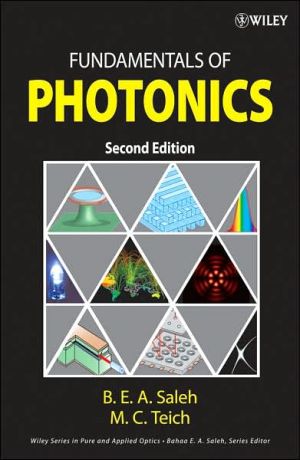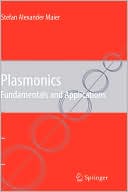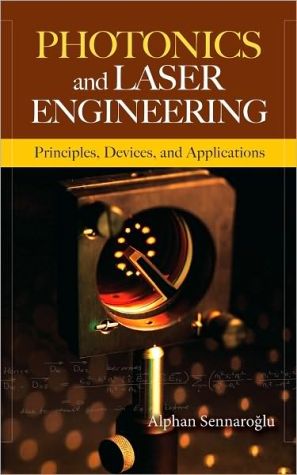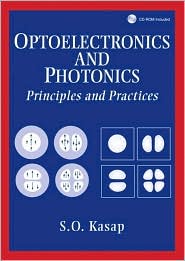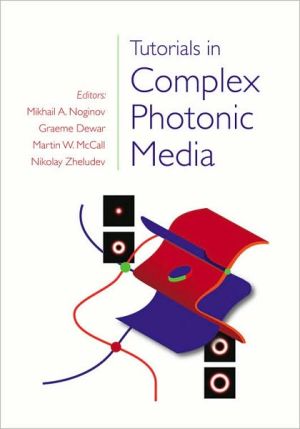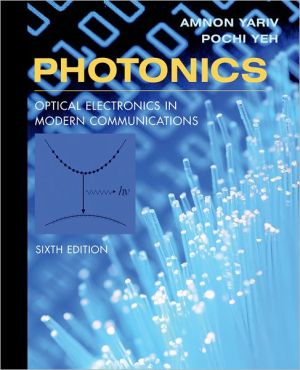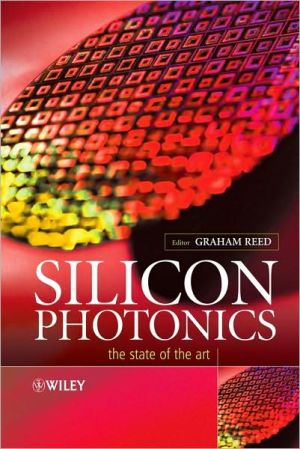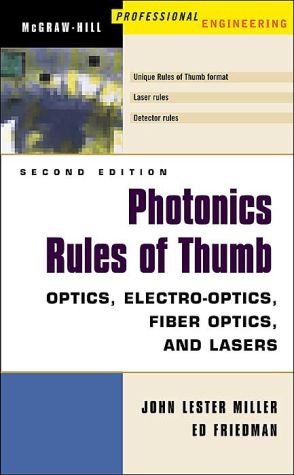Optical Sources, Detectors, And Systems
Optical Sources, Detectors, and Systems presents a unified approach, from the applied engineering point of view, to radiometry, optical devices, sources, and receivers. One of the most important and unique features of the book is that it combines modern optics, electric circuits, and system analysis into a unified, comprehensive treatment.\ The text provides physical concepts together with numerous data for sources and systems and offers basic analytical tools for a host of practical...
Search in google:
This text will be of interest to students, researchers, and systems engineers. The fundamentals of blackbody radiation, lasers, and optical detectors are developed in a unified manner and used for a quantitative formulation of measurement precision, communication and radar error rates, and imaging system sensitivity. The treatment includes a thorough explanation of photon, Johnson, and amplifier noise, as well as noise in avalanche photodiodes and optical amplifiers. Detector properties from D* to RA product are defined and explained. Optical system concepts such as focal length, f number, field-of-view, and aperture area are then utilized to establish performance capability for both direct detection and heterodyne systems. Numerous examples and problems cover such diverse topics as medical thermography and laser speed detectors. This book emphasizes the basics and provides ample references to more detailed treatments and specific applications. Booknews Treats the fundamentals of noise in fiber optic systems such as communications devices, camcorders, and supermarket checkout counters, describing it as the fluctuation or uncertainty in a signal voltage that can lead to transmission errors. Explains techniques that systems engineers can use to develop quantitative predictions for overall system performance. Assumes a knowledge of probability densities, electrical systems, Fourier transforms, complex notation, and the principles of semiconductor devices. Annotation c. Book News, Inc., Portland, OR (booknews.com)
PrefaceSymbolsCh. 1Blackbody Radiation, Image Plane Intensity, and Units1Ch. 2Interaction of Radiation with Matter: Absorption, Emission, and Lasers33Ch. 3The Semiconductor Laser48Ch. 4The Ideal Photon Detector and Noise Limitations on Optical Signal Measurement73Ch. 5Real Detectors: Vacuum Photodiodes and Photomultipliers, Photoconductors, Junction Photodiodes, and Avalanche Photodiodes97Ch. 6Heterodyne or Coherent Detection and Optical Amplification123Ch. 7Systems I: Radiometry, Communications, and Radar142Ch. 8Systems II: Imaging177Appendix A: Answers to Problems191References193Index195
\ From the PublisherWhile the book emphasizes the fundamentals, it succeeds in covering a broad scope of topics well. Nearly every reader will find something new and useful here....In short, Optical Sources, Detectors, and Systems: Fundamentals and Applications is an excellent guide to designing and understanding radiometric systems and will be useful for students and systems engineers alike. It is practical, thorough, and a pleasure to read.\ —OPTICS AND PHOTONICS NEWS\ \ \ \ \ BooknewsTreats the fundamentals of noise in fiber optic systems such as communications devices, camcorders, and supermarket checkout counters, describing it as the fluctuation or uncertainty in a signal voltage that can lead to transmission errors. Explains techniques that systems engineers can use to develop quantitative predictions for overall system performance. Assumes a knowledge of probability densities, electrical systems, Fourier transforms, complex notation, and the principles of semiconductor devices. Annotation c. Book News, Inc., Portland, OR (booknews.com)\ \

